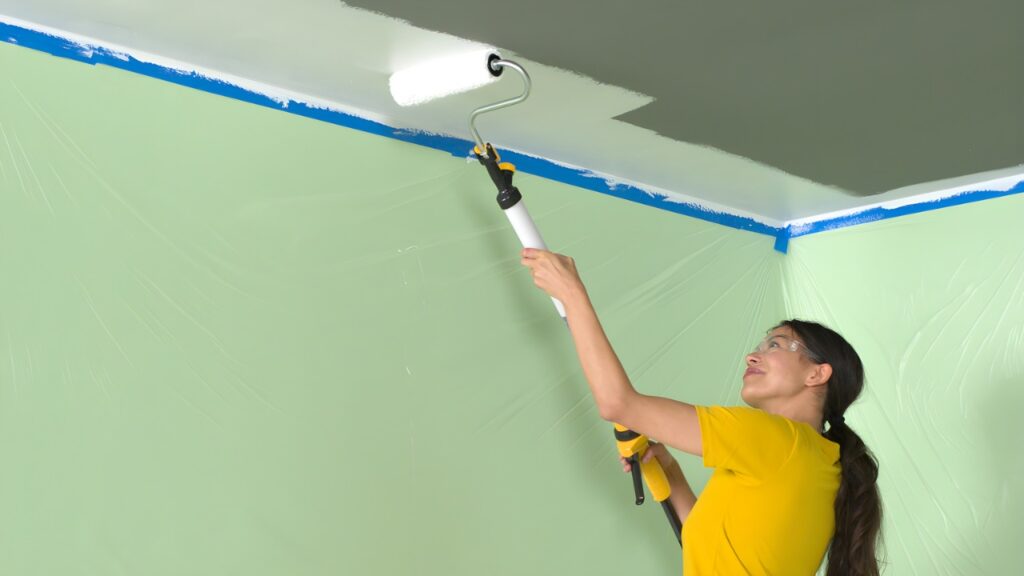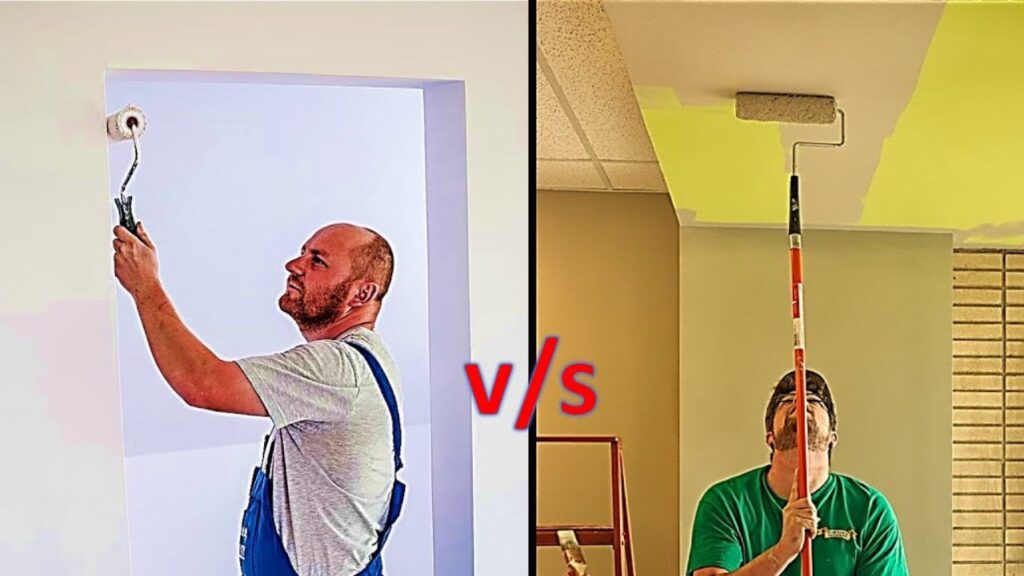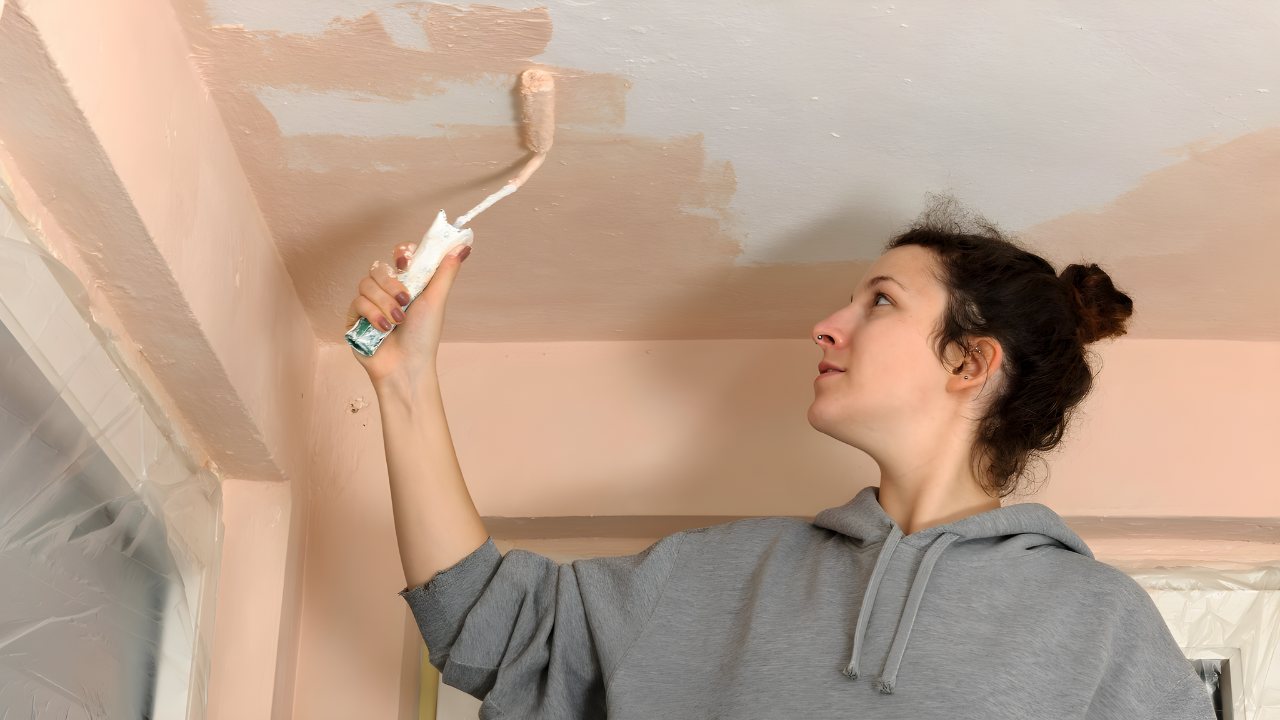Ceiling Paint Vs Wall Paint: Ceiling and wall paints are formulated differently to meet each surface. Ceiling paint is thicker and designed to prevent dripping.
You go to your local hardware or paint store, find the color you want, bring it home, unpack it, and paint your walls and ceiling. It’s that easy, right?
Yes, you can use the same paint on walls and ceiling, but you may not get the desired results. There are subtle differences between the two, and it is recommended to use ceiling paint for the ceiling and wall paint for the wall.
If you are not prepared and use the wrong paint, it can be disastrous. This article will discuss the difference between ceiling paint vs. wall paint.
Ceiling Paint Vs Wall Paint Thickness of Ceiling Paint
When it comes to painting you may have heard the term ‘viscosity‘, which is a fancy word for thickness.

Ceiling paint is thicker than wall paint, and the reason for this is obvious. When painting your roof, you lay down tarps and sheets to catch paint drips, but you still want the paint to drip as little as possible.
Nobody wants paint to get into their eyes. The thickness of ceiling paint means it doesn’t drip as much as wall paint.
Wall paint is thinner – you don’t have to worry as much about dripping, if you apply too much paint the paint will run more down the wall, but gravity won’t work as hard on it as it does on the ceiling.
Drying Time: Ceiling vs. Wall Paint
Fewer splashes and splatters are a benefit when it comes to ceiling paint, but the thickness of the paint also means less drying time. There is not much liquid in it, so evaporation is less.

- When painting walls, the paint you use may dry quickly, but it won’t dry as quickly as paint on a ceiling.
- The thickness of the paint means you need to be careful when using wall paint on a ceiling
- The quick-drying nature of ceiling paint means that you need to be careful when using ceiling paint on your walls.
- If you want to use ceiling paint, make sure you are prepared so that when you start painting, you can cover the area before the paint dries.
Benefits of Using Ceiling Paint or Wall Paint
It is recommended that most painting contractors and DIYers use the specified type of paint when painting walls and ceilings. Still, there are some benefits to using only wall paint or ceiling paint:
Its super simple:
You’ll only need to buy one type of paint, you won’t need to frequently switch between tins, and you won’t have to worry about cleaning your brush or roller between coats. The truth is, if it makes even a slight difference, you probably don’t want to spend the extra time.
You can match colors:
While it’s not guaranteed that the wall and ceiling colors will match, if you use the same color tin, you can guarantee that your ceiling and walls will match.
You can match the finish:
While you may find two semi-gloss paints, the exact amount of gloss may vary slightly. By using one paint, you ensure the exact same level of finish on both your ceiling and walls.
Is There A Difference In Cost?
Ceiling paint costs a lot more than wall paint (provided you are comparing the same quality), and even though it is thicker and requires fewer coats, Financially you will be in a better position if you use wall paint instead of ceiling paint. It may take more time, but you will save on material.




